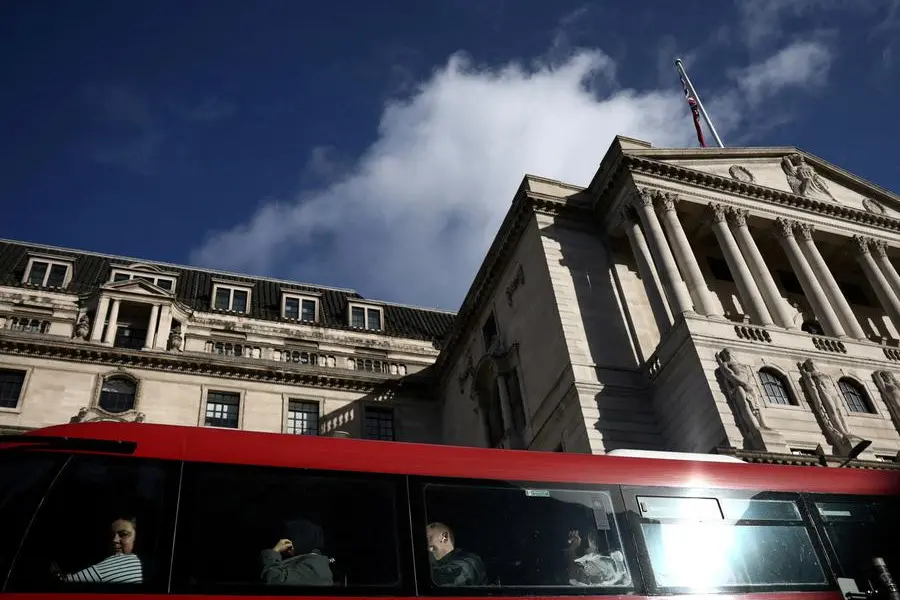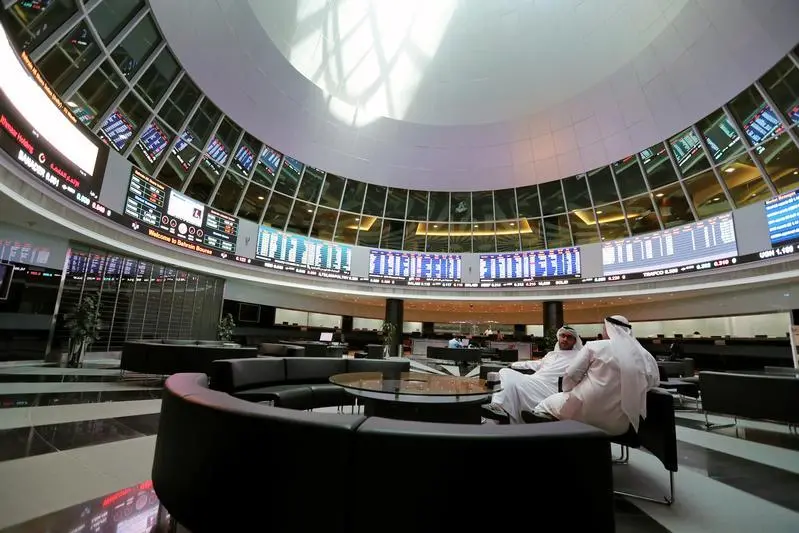PHOTO
FILE PHOTO: People sit onboard a public bus outside the Bank of England in the City of London financial district in London, Britain, March 23, 2023. REUTERS/Henry Nicholls/File Photo
LONDON - Even as consensus builds inside and outside the Bank of England on UK interest rate cuts this summer, the thorny issue for banks and bond markets of when it stops its steep balance sheet rundown seems a bit murkier.
Rising take-up of a key BoE short-term lending facility launched in October 2022 following severe budget-related bond market turmoil that month has raised questions this year about whether banks are being starved of liquidity already as the central bank sticks by its ongoing sales of government bonds.
Last week, the BoE allotted more than 14 billion pounds ($18.30 billion) of one-week funds in its short-term securities repurchase operation, the largest usage to date of the facility after several weeks of rising demand.
Much like the U.S. Federal Reserve and other peers, the BoE is at pains to separate interest rate management and monetary policy from what its sees as a secular move to downsize a pandemic-bloated balance sheet to an adequate "steady state" going forward.
The problem for all of these central banks - including the Fed, which recently slowed its balance sheet runoff - is that it's not entirely clear what that "new normal" is and they may only find out when liquidity stress emerges in the banking system.
As the size of its balance sheet dictates the amount of reserves in the financial system for onward lending, the BoE's so-called quantitative tightening - late 2022's shock aside - has proceeded relatively smoothly to date and in tandem with its restrictive interest rate stance.
With a relatively aggressive mix of direct gilt sales and allowing other bonds to mature and roll off, the BoE has lopped more than 200 billion pounds off the pile over two years to leave it at 760 billion pounds now - about 30% of annual gross domestic product.
If there was serious stress building already at these still-elevated levels, it would be considerable cause for concern - not least with the balance sheet still almost 300 billion pounds and 10 percentage points of GDP above pre-pandemic levels.
After all, the BoE still pays interest on those reserves at its prevailing policy rate and the UK Treasury is ultimately on the hook for it.
Earlier this month, however, BoE Deputy Governor Dave Ramsden dismissed the rising draw on the weekly repo facility (STR) as a sign of any reserves shortage among banks per se.
"There's always going to be stuff happening in the repo market but the STR is doing its job," he said after the policy meeting. "We're not seeing some ratcheting up more in rates that might make you think 'Oh right, so reserves are becoming a bit scarce'."
MAPPING A STEADY STATE
The BoE uses the weekly repo to help keep money market rates close to its policy rate, which is currently at 5.25%, though expected to be cut by a quarter point by August if not next month.
In monitoring the situation, strategists at Morgan Stanley partly concurred with Ramsden that some one-off factors, including some outsize gilt redemptions, may be spurring the draw on the STR.
But they also pointed out there is some evidence of shrinking liquidity in rising spreads of overnight repo rates (RONIA) over the BoE policy rate and also in the equivalent gap between sterling overnight rates (SONIA) creeping back toward positive territory.
What's more, Morgan Stanley strategists said they see active gilt sales at least temporarily halting next year when plans are laid out in September. That's largely because direct sales probably won't be needed to keep the balance sheet roll-off at the current pace, due mainly to a huge 90 billion of redemptions from the stash through September 2025.
But they said sales may have to resume after that if estimates of that slightly elusive "steady state" for the overall balance sheet are to met.
What's that magic level?
According to banking surveys done by the BoE's markets division last year, the comfortable steady state is anywhere between 330 billion and 495 billion pounds - the top end amounting to about 20% of GDP - and meaning at least another 260 billion pounds or more could yet come off without major ructions.
BoE boss Andrew Bailey weighed in on the issue on Tuesday saying the repo usage was not a major problem, temporary in nature and the facility was designed to be used flexibly anyway - even if perceived stigma in drawing the money made some banks wary of using the window.
Echoing last year's survey, Bailey said a 345 billion to 490 billion pounds steady state estimate was not a bad starting point and that could well be hit by the second half of next year.
The speech chimed with what the International Monetary Fund indicated earlier in the day in its annual review of the British economy - that the steady state for BoE reserves could be hit late next year.
"The QT strategy should continue to be guided by the (BoE's) key principles, which include leaving Bank Rate as the active monetary policy instrument and not disrupting smooth market functioning," the IMF report said.
"The BoE should continue to monitor signs of any undue pressure on short-term money market rates and gilt yields and adjust QT implementation as needed."
Is all this spooking bond investors?
With BoE policy rates set to fall while all of the balance sheet spaghetti disentangles and as 2022's risk premium fades, many investors are convinced gilts are still very cheap.
Russell Silberston at asset manager Ninety One reckons 10-year gilts yields are "compelling" and could fall by 65 basis points from the current 4.15% to meet his fair value estimate.
The opinions expressed here are those of the author, a columnist for Reuters.
(Editing by Jamie Freed)























